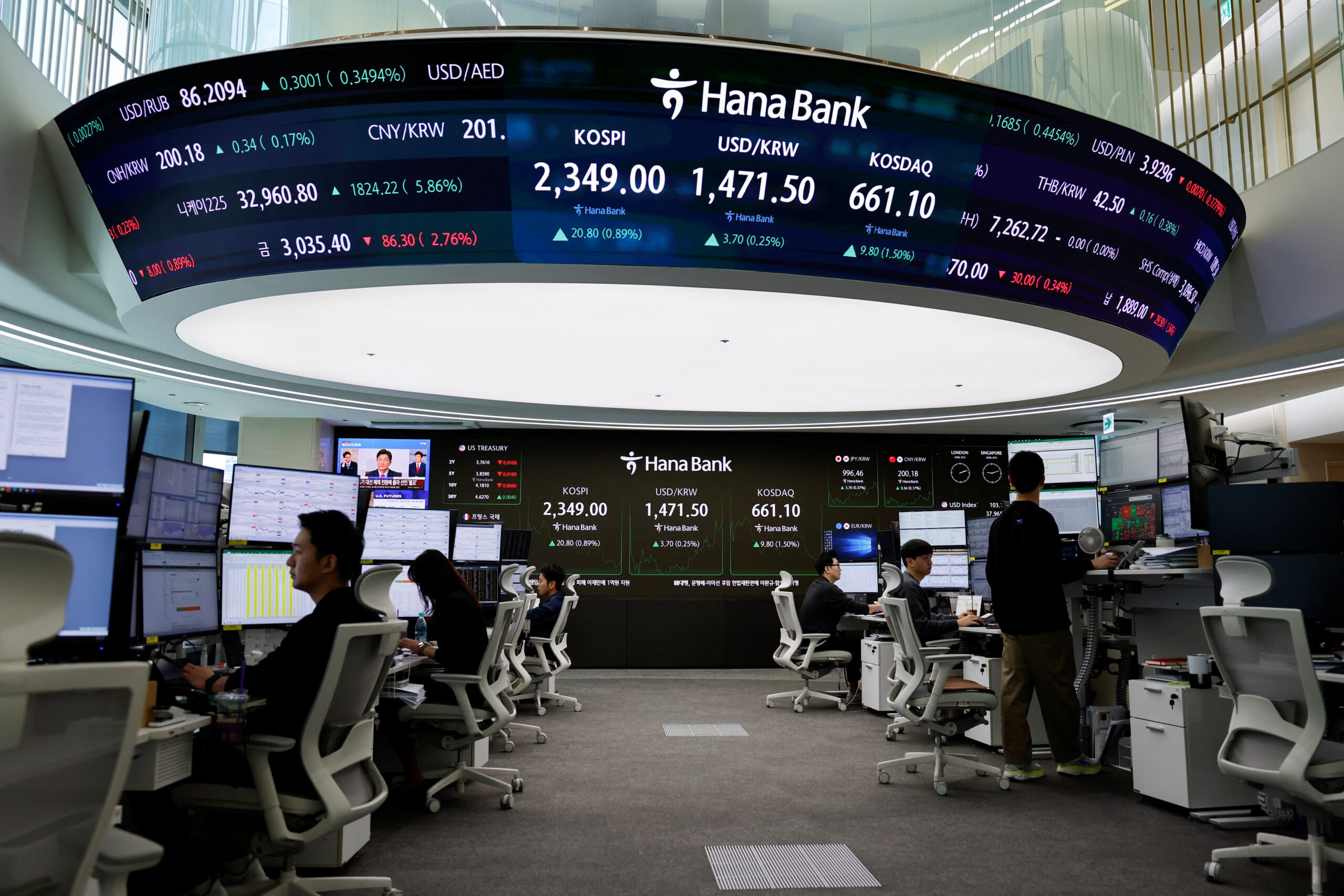
Asian Currencies Strengthen as Dollar Dips on U.S. Policy Uncertainty and G7 Developments
Asian currencies strengthened on Wednesday, supported by a weaker U.S. dollar as doubts surrounding President Donald Trump’s tax reform proposal and cautious sentiment during the ongoing G7 finance ministers’ meeting weighed on the greenback.
In the region, traders also evaluated Japan’s disappointing trade data, which highlighted the impact of U.S. tariffs. Simultaneously, concerns over the U.S.-China trade relationship continued to influence market sentiment.
Dollar Slips on Policy Concerns and G7 Watch
The U.S. Dollar Index, which tracks the currency’s performance against a basket of major peers, declined by 0.3%, while futures tied to the index fell by 0.4% during Asian trading hours.
Reports indicated that President Trump pushed Republican lawmakers to support a sweeping tax reform package, though resistance from some members of Congress raised doubts about its passage. If approved, the bill could significantly increase the fiscal deficit, a concern highlighted after Moody’s downgraded the U.S. credit rating last week due to rising national debt levels.
Investors were closely following the G7 finance ministers' meeting in Canada, scheduled to conclude on Thursday. Analysts noted that while the final communiqué may maintain its typical language around foreign exchange, any slight changes could rattle markets and pressure the dollar further.
Additionally, comments from Federal Reserve officials underscored that ongoing trade tariffs could sustain inflation and delay changes in interest rates.
Asian FX Moves: Japan’s Trade Disappoints, China Criticizes U.S. Chip Curbs
The dollar’s weakness supported gains in most Asian currencies. The South Korean won led the way, with the USD/KRW pair dropping 0.5%, followed by the Japanese yen, whose USD/JPY pair slipped 0.4%.
Japan’s trade balance for April shrank unexpectedly, with exports hit by U.S. tariffs and a stronger yen, while imports performed slightly better than forecast.
In China, the commerce ministry voiced opposition to new U.S. restrictions on Chinese semiconductor firms, particularly targeting efforts to globally block Huawei’s chips. Beijing warned that such actions risk undermining the 90-day trade truce currently in place.
The Chinese yuan remained largely steady, with both the offshore USD/CNH and onshore USD/CNY pairs showing limited movement.
The Australian dollar rose 0.5% against the greenback, recovering from losses in the prior session after the Reserve Bank of Australia cut interest rates by 25 basis points on Tuesday.
Meanwhile, the Singapore dollar edged higher, with the USD/SGD pair slipping 0.2%, and the Indian rupee remained stable against the dollar.
In the region, traders also evaluated Japan’s disappointing trade data, which highlighted the impact of U.S. tariffs. Simultaneously, concerns over the U.S.-China trade relationship continued to influence market sentiment.
Dollar Slips on Policy Concerns and G7 Watch
The U.S. Dollar Index, which tracks the currency’s performance against a basket of major peers, declined by 0.3%, while futures tied to the index fell by 0.4% during Asian trading hours.
Reports indicated that President Trump pushed Republican lawmakers to support a sweeping tax reform package, though resistance from some members of Congress raised doubts about its passage. If approved, the bill could significantly increase the fiscal deficit, a concern highlighted after Moody’s downgraded the U.S. credit rating last week due to rising national debt levels.
Investors were closely following the G7 finance ministers' meeting in Canada, scheduled to conclude on Thursday. Analysts noted that while the final communiqué may maintain its typical language around foreign exchange, any slight changes could rattle markets and pressure the dollar further.
Additionally, comments from Federal Reserve officials underscored that ongoing trade tariffs could sustain inflation and delay changes in interest rates.
Asian FX Moves: Japan’s Trade Disappoints, China Criticizes U.S. Chip Curbs
The dollar’s weakness supported gains in most Asian currencies. The South Korean won led the way, with the USD/KRW pair dropping 0.5%, followed by the Japanese yen, whose USD/JPY pair slipped 0.4%.
Japan’s trade balance for April shrank unexpectedly, with exports hit by U.S. tariffs and a stronger yen, while imports performed slightly better than forecast.
In China, the commerce ministry voiced opposition to new U.S. restrictions on Chinese semiconductor firms, particularly targeting efforts to globally block Huawei’s chips. Beijing warned that such actions risk undermining the 90-day trade truce currently in place.
The Chinese yuan remained largely steady, with both the offshore USD/CNH and onshore USD/CNY pairs showing limited movement.
The Australian dollar rose 0.5% against the greenback, recovering from losses in the prior session after the Reserve Bank of Australia cut interest rates by 25 basis points on Tuesday.
Meanwhile, the Singapore dollar edged higher, with the USD/SGD pair slipping 0.2%, and the Indian rupee remained stable against the dollar.



